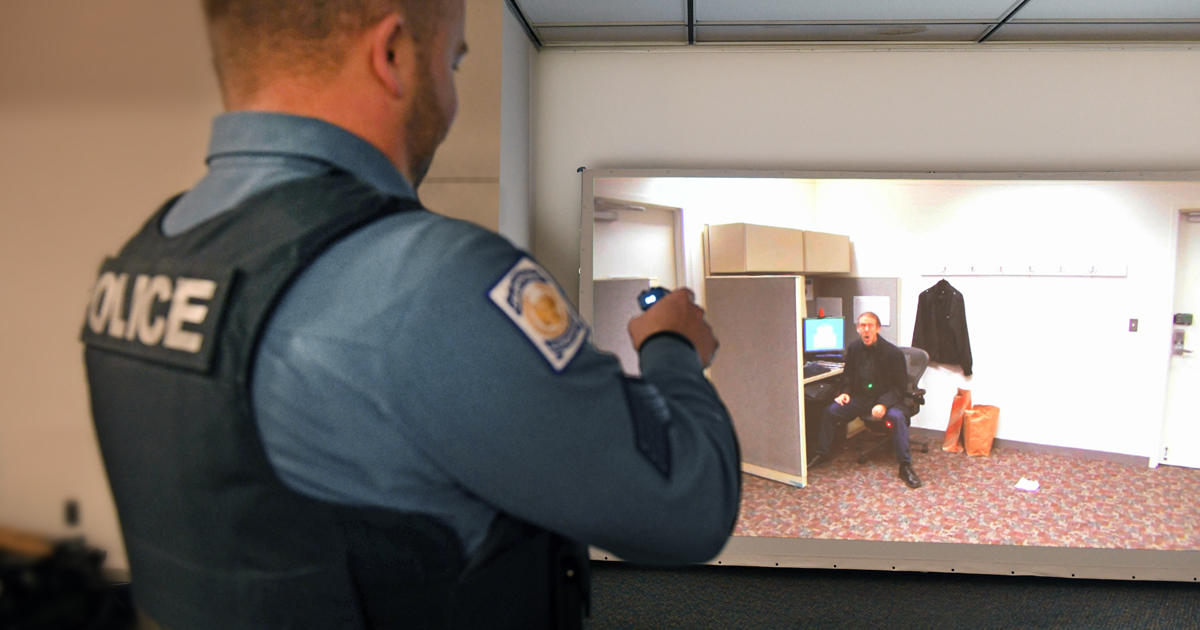SUPD Unveils Cutting-Edge Police Training Simulator as Latest Campus Safety Tool
SALISBURY, MD---Just after midnight, a Salisbury University Police officer approaches a suspicious vehicle in a campus parking lot.
A half hour later, a responding unit carefully begins searching a building in search of a reportedly armed suspect.
Shortly after that, a student participating in a demonstration starts taunting the officer assigned to ensure the activity remains peaceful, threatening to shift the rally toward violence.
These are just three of the 1,200 scenarios programmed into the SU Police Department’s new Recon 180 training simulator, funded by a $30,000 grant from the Maryland Governor’s Office of Crime Prevention, Youth and Victim Services.
“This has been on our wish list,” said SUPD Lt. Chris Shockley. “This is the largest grant we’ve received at the SU Police Department.”
SUPD Chief Edwin Lashley and his command team first learned of the simulator, from Texas-based TI Training, while attending a Commission on Accreditation for Law Enforcement Agencies (CALEA) conference in connection with the department’s ongoing national accreditation.
Having worked with a similar system at the Eastern Shore Criminal Justice Academy at Wor-Wic Community College, he immediately saw an advantage in having an in-house simulator for SUPD training.
Projecting lifelike, interactive scenes on 16 life-sized screens that can be set up in a variety of configurations, the simulator is responsive to everything from physical interactions, such as an officer’s firing a gun, to verbal conversations, picking up on key words to determine how an on-screen avatar reacts to the officer.
Lashley hopes the simulator will be particularly useful in de-escalation training, which has been requested by several student groups on campus, including the Student Government Association (SGA).
“We have advocated for better de-escalation training in the past, but to see something as high-tech as virtual reality be implemented is awesome,” said SGA President Andrew Wilson.
TI updates the simulator’s scenarios every six months, providing offers with the most up-to-date trainings available.
“We would literally have to use it every day to run out,” said Shockley.
Though the idea of simulators for police training isn’t new, it’s novel for the Eastern Shore, where only a handful of such systems exist. With offers to allow allied law enforcement agencies to take advantage of the technology at SU, Shockley sees many opportunities for collaboration.
“We think it’s a great opportunity to work together,” he said, noting that multiple agencies responding and backing each other up on real-life calls is not unusual.
While the simulator provides a cutting-edge resource for SUPD officers, the technology it uses is not as important as the skills it teaches, Shockley added.
“At the end of the day, it’s our job to maintain a safe environment for the students, employees and visitors at SU,” said Shockley. “This gives us another tool in our toolkit to make sure we’re doing that as effectively as possible.”
Learn more about opportunities to Make Tomorrow Yours at the SU website.

